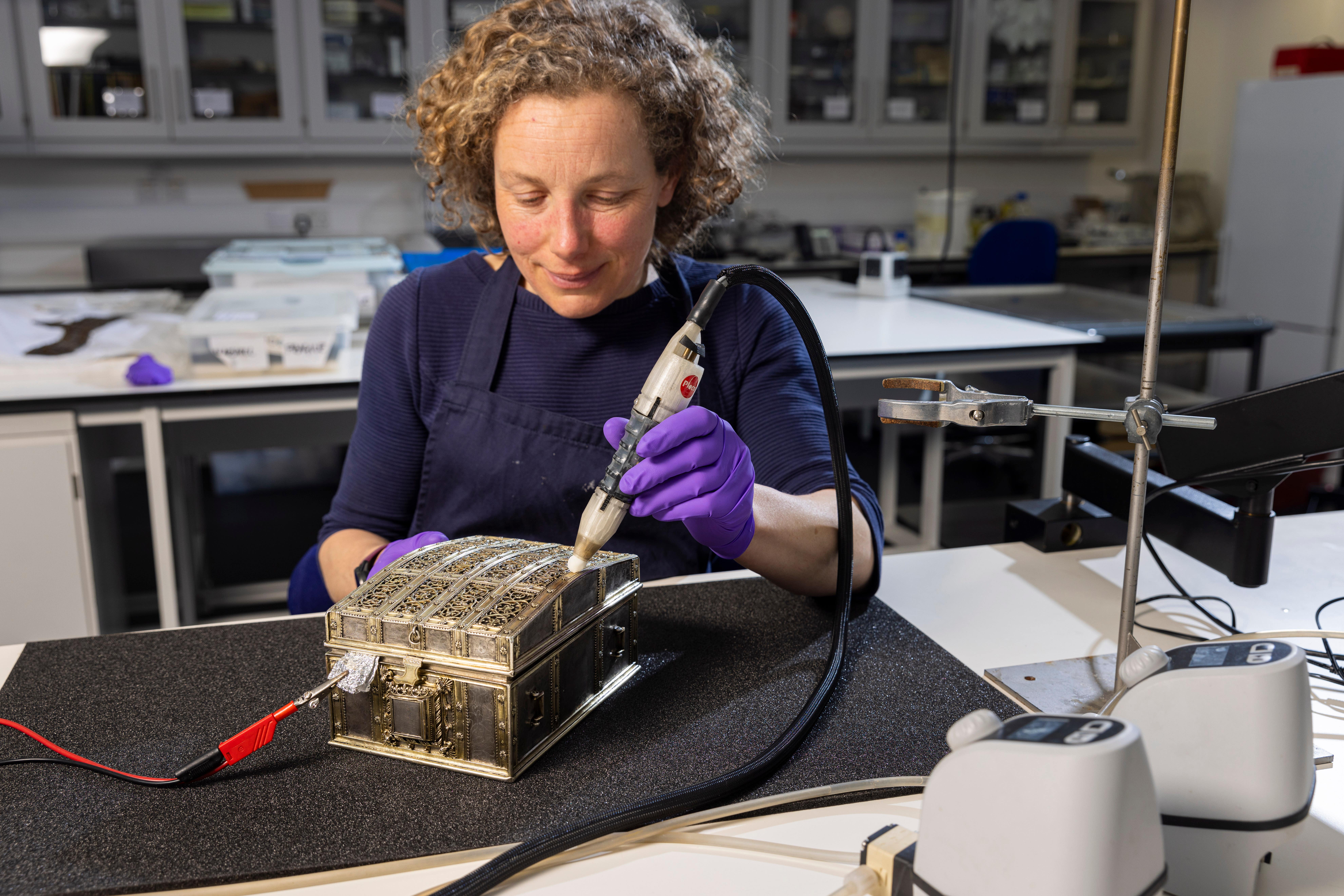Casket thought to have been owned by Mary Queen of Scots to go on tour
The casket was acquired for the nation in 2022.

An “extraordinary” silver casket believed to have belonged to Mary Queen of Scots has undergone fresh conservation work ahead of going on tour around Scotland.
It is thought the casket was given to Mary by her first husband, Francois II of France, and came to Scotland with her in 1561 after his death in 1560.
The casket was acquired for the nation by National Museums Scotland (NMS) in 2022 for £1.8 million thanks to support from the National Heritage Memorial Fund, Art Fund, the Scottish Government and several trusts, foundations and individual donors.
It is now set to go on tour and will be on display at Kirkcudbright Galleries in Dumfries and Galloway from November 2 this year until April 27 2025, then at Stirling Smith Art Gallery & Museum from April 30 to August 31 next year.
Dr Anna Groundwater, acting keeper of Scottish history and archaeology at NMS, said: “One of Scotland’s national treasures, this extraordinary casket has been venerated as a relic of Mary, Queen of Scots, for centuries and I’m delighted that more people will have the opportunity to see it up close when it goes on tour later this year.
“Beyond its connections to one of Scotland’s most famous figures, it is a rare and spectacular piece of historic silver in its own right.”
Conservators have removed centuries of tarnish and corrosion to prepare the casket for the tour.
The technique of electrolytic reduction was used via a pen-like device, allowing the delicate gold and silver surfaces to be cleaned in a highly controlled and targeted manner without the need for any abrasive polishing.
For three centuries, the casket was owned by the family of the Dukes of Hamilton, following its acquisition, around 1674, by Anne, Duchess of Hamilton.
According to a handwritten note stored with it from the late 17th century, she bought the casket, previously owned by Mary, Marchioness of Douglas, on the understanding that it had belonged to Mary, Queen of Scots.
The note records the belief that the casket is the one which played a dramatic role in Mary’s downfall when, in December 1568, a similar casket was produced at a hearing ordered by Elizabeth I against Mary at Westminster.
This contained what have become known as the Casket Letters. These love poems and letters, allegedly from Mary to her third husband, the Earl of Bothwell, implicated them both in a conspiracy to murder her second husband, Lord Darnley.
This extraordinary treasure gives us a glimpse into the life of a Queen who has captured imaginations around the world for hundreds of years
The authorship of the letters remains a subject of debate but it is widely thought that they were doctored.
Following the hearing at Westminster, Mary remained in English captivity for 19 years until she was executed in 1587 for her involvement in the Babington Plot to assassinate Elizabeth I, and place Mary on the English throne.
After being owned by the family of the Dukes of Hamilton, it was owned by Lennoxlove House Ltd until its acquisition by NMS.
Councillor Jackie McCamon, speaking on behalf of Dumfries and Galloway Council, said: “This is such an exciting loan. We are pleased to be working with the National Museums Scotland once more, a key partner for Kirkcudbright Galleries over the years, and have no doubt this will be an emotional and stirring exhibition.”
Made in Paris, probably between 1493 and 1510, the casket is described as a superb and extremely rare work of early French silver, very little of which survives, even in France.
Caroline Mathers, director of the Stirling Smith Art Gallery and Museum, said: “This extraordinary treasure gives us a glimpse into the life of a Queen who has captured imaginations around the world for hundreds of years.”
Its display in Kirkcudbright and Stirling is supported by the Weston Loan Programme with Art Fund.
Bookmark popover
Removed from bookmarks